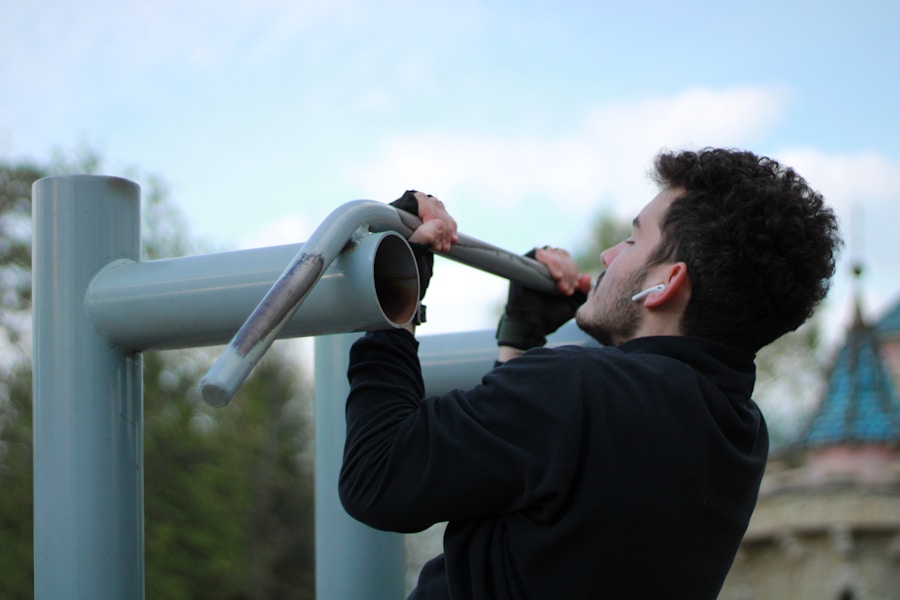Shoulder exercises are a fundamental component of any comprehensive fitness regimen. The shoulders, comprising the deltoid muscles and the rotator cuff, play a crucial role in upper body movement and stability. Engaging in targeted shoulder workouts not only enhances muscle definition but also improves overall functional strength, which is essential for daily activities and athletic performance.
Whether you are an experienced lifter or a beginner, understanding the importance of shoulder exercises can significantly impact your fitness journey. Incorporating shoulder exercises into your routine can lead to a well-rounded physique and improved posture. Strong shoulders contribute to better alignment of the spine and can alleviate discomfort associated with poor posture.
Furthermore, well-developed shoulder muscles can enhance your performance in various sports and physical activities, making it easier to execute movements that require upper body strength, such as throwing, lifting, or pushing.
Key Takeaways
- Shoulder exercises are essential for building muscle and strength in the upper body.
- Building shoulder muscle and strength can improve posture, stability, and overall upper body strength.
- Top shoulder exercises include overhead press, lateral raises, front raises, and reverse flyes.
- Proper form and technique are crucial for preventing injury and maximizing shoulder muscle growth.
- Incorporating shoulder exercises into your workout routine can help you achieve a well-rounded and balanced physique.
Benefits of Building Shoulder Muscle and Strength
Enhanced Functional Strength
The stability provided by strong shoulders is particularly important for everyday tasks, as it enables individuals to perform various activities with greater ease and confidence. This, in turn, can lead to a significant improvement in overall quality of life.
Improved Athletic Performance
This stability is particularly important for athletes who rely on shoulder strength for performance in sports like swimming, tennis, and weightlifting. Moreover, developing shoulder muscles can lead to improved athletic performance. A strong shoulder girdle allows for more powerful and efficient movements, which can translate into better results in various sports.
Aesthetics and Confidence
Additionally, well-defined shoulders contribute to an aesthetically pleasing physique, often considered a hallmark of fitness. This visual appeal can boost self-confidence and motivate individuals to maintain their workout routines.
Overall Benefits
Overall, building shoulder muscle and strength is essential for both functional and aesthetic purposes, offering a wide range of benefits that can enhance an individual’s overall well-being and quality of life.
Top Shoulder Exercises for Muscle Building
Several effective exercises target the shoulder muscles, each offering unique benefits. The overhead press is a classic compound movement that engages multiple muscle groups, including the deltoids, triceps, and upper chest. By pressing weights overhead, individuals can build significant strength and mass in their shoulders.
Variations such as the seated dumbbell press or barbell military press can be incorporated to add variety and challenge. Another excellent exercise for shoulder development is the lateral raise. This isolation movement specifically targets the lateral deltoids, helping to create width and definition in the shoulders.
Performing lateral raises with dumbbells or resistance bands allows for controlled movement and can be easily adjusted for different fitness levels. Additionally, incorporating exercises like front raises and reverse flyes can further enhance shoulder muscle development by targeting different areas of the deltoids.
How to Perform Shoulder Exercises Safely and Effectively
| Exercise | Description | Benefits | Tips |
|---|---|---|---|
| Shoulder Press | Pressing weight overhead while standing or sitting | Strengthens shoulder muscles | Use proper form and avoid locking elbows |
| Lateral Raises | Raising arms to the sides with weights | Targets side shoulder muscles | Keep a slight bend in the elbows |
| Front Raises | Raising arms to the front with weights | Works front shoulder muscles | Avoid swinging the weights |
| Rotator Cuff Exercises | Internal and external rotation exercises | Improves shoulder stability | Start with light weights and focus on control |
Safety is paramount when performing shoulder exercises to prevent injuries and ensure effective training. It is essential to start with a proper warm-up that includes dynamic stretches targeting the shoulder area. This preparation increases blood flow to the muscles and enhances flexibility, reducing the risk of strains or tears during workouts.
Additionally, using lighter weights initially allows individuals to focus on mastering their form before progressing to heavier loads. When executing shoulder exercises, maintaining proper alignment is crucial. Keeping the core engaged and avoiding excessive arching of the back helps stabilize the body during movements.
It is also important to control the weights throughout each repetition, avoiding jerky motions that can lead to injury. Listening to your body and recognizing when to rest or modify an exercise is vital for long-term success in building shoulder strength.
Incorporating Shoulder Exercises into Your Workout Routine
Integrating shoulder exercises into a workout routine requires thoughtful planning to ensure balanced muscle development. A well-structured program might include shoulder workouts two to three times per week, allowing adequate recovery time between sessions. It is beneficial to combine shoulder exercises with other upper body movements, such as chest and back workouts, to promote overall strength and symmetry.
Additionally, varying the types of shoulder exercises performed can prevent plateaus and keep workouts engaging. For instance, alternating between free weights, machines, and bodyweight exercises can provide different stimuli for muscle growth. Incorporating supersets or circuits that include shoulder exercises alongside other muscle groups can also enhance workout efficiency and intensity.
Tips for Maximizing Shoulder Muscle Growth and Strength
To maximize shoulder muscle growth and strength, consistency is key. Regularly challenging the muscles with progressive overload—gradually increasing weights or resistance—can stimulate growth over time. Tracking progress through a workout journal or app can help individuals stay motivated and focused on their goals.
Nutrition also plays a critical role in muscle development. Consuming adequate protein supports muscle repair and growth after workouts. Including a balanced diet rich in whole foods—such as lean proteins, healthy fats, and complex carbohydrates—can provide the necessary nutrients for optimal performance and recovery.
Importance of Proper Form and Technique in Shoulder Exercises
Proper form and technique are essential when performing shoulder exercises to maximize effectiveness and minimize injury risk. Incorrect form can lead to undue stress on the joints and surrounding muscles, potentially resulting in chronic pain or acute injuries. Therefore, it is advisable to seek guidance from fitness professionals or utilize instructional resources when learning new exercises.
Moreover, focusing on controlled movements rather than lifting heavy weights can enhance muscle engagement during workouts. This approach allows individuals to fully activate the target muscles while maintaining joint integrity. Regularly assessing one’s form through mirrors or video recordings can provide valuable feedback for improvement, ensuring that each workout contributes positively to overall shoulder strength and development.




